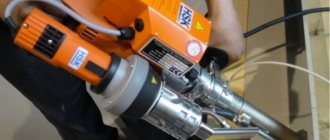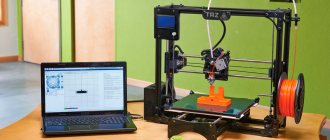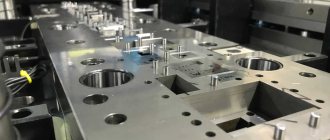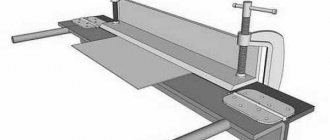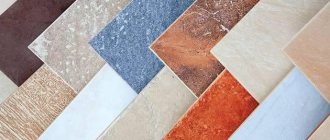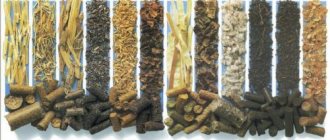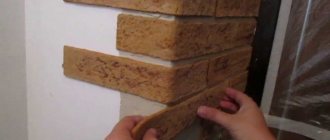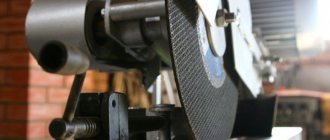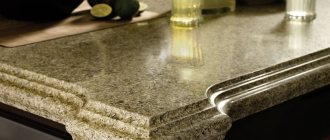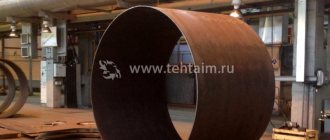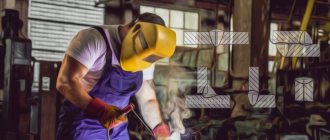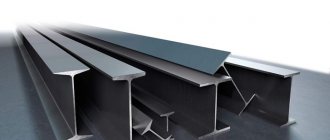In the 21st century, developed technologies are using artificially created polymers and plastics; these materials do not exist in nature, therefore, a carefully adjusted technological process is required to obtain high-quality specimens. Due to its specific properties, plastic is widely used as a material that saves the use of expensive non-ferrous metals and reduces the weight of components and parts. With the help of modern technologies, the manufacturing process of plastic products is fully automated, minor machining operations are reduced to a minimum.
Choice of plastics
The main selection conditions are technological and operational properties. To help the technologist, comparative tables have been created containing grades of materials with a description of technical characteristics, while radio engineering and electrical properties, dielectric constant, mechanical and strength indicators are indicated. Wear and friction coefficients, Poisson coefficients, thermal expansion indicators and other characteristics are indicated.
To classify plastics, the following characteristics are used:
- type of filler used;
- performance;
- intended for use in various fields;
- the meaning of some important parameters and performance characteristics.
What is plastic injection
Large-scale and mass production of plastic parts involves a complex technological process of injecting molten plastic under high pressure into a prepared injection mold made of metal. The liquid mass evenly fills the volume and crystallizes, acquiring the required shape. Thanks to injection molding technology, it is possible to obtain high-quality products. To implement the method, complex, expensive equipment is used that provides high productivity. Almost half of the polymer parts are produced using this method. Thermoplastic granules, as well as thermosetting powders, are used as raw materials for the production process, giving the finished products the required physical and performance qualities. Thermoplastic components retain their parameters during recycling, while thermoset components undergo irreversible chemical reactions and form an infusible material.
The prepared polymer components are loaded into the hopper of the injection molding machine, in which they are melted and homogenized. Next, the mass is injected at speed, thanks to the pressure created, through special channels into the prepared form. The cavity quickly fills. After solidification, a casting is formed. The quality of polymer products depends on the injection speed. Worm-type plasticizers are the most popular. They are characterized by high productivity and better homogenization of the molten mass. Less popular piston type equipment. It provides the supply of molten polymer at high speed into the injection mold and provides the opportunity to obtain a marble effect in the case of preparing a mixture of multi-colored plastics. In production, the use of a separate method is allowed. It involves the preparation of the molten mass in a preplasticizer with a worm mechanism, and the dosing and injection of the viscous mass into the mold is carried out using piston-type equipment.
Production of plastic products
The main operational processes for processing plastics and polymers during the production process are:
- preparation of material for technological production;
- selection of the required amount of feedstock;
- tabletting the mass and preheating (in some cases);
- molding a given product;
- final finishing by mechanical or machine methods.
Hot molding method
The main thing for production is to obtain high-quality products with high productivity. When talking about product quality, they mention structural molecular indicators:
- amorphous polymers are characterized by orientation;
- Crystallizing polymers are distinguished by a variety of supramolecular formations at all stages of aggregation, therefore they use the method of specified crystallization.
The supercrystalline structure of crystallizing polymers is diverse, so materials with the same properties when processed under different conditions give changing properties of parts . The stability of a certain set of properties is solved through the precise selection and execution of the required polymer processing modes.
Pre-drying of polymers
Technological process maps and the quality of the resulting products are determined by the humidity and temperature of the plastic. At the preparatory stage, drying or moistening is done to bring the indicators to the required standard. Water molecules have the property of polarity and quickly bond with polar polymers, because of this they absorb moisture from the environment. Increasing polarity promotes increased absorption, and vice versa. Some polymers are initially non-hygroscopic, which makes it impossible to saturate them with moisture during the preparatory process.
Increasing the humidity of the material at the preparatory stage reduces its fluidity; excess moisture reduces the interaction of molecules and affects the level of hydrolytic destruction. Moisture saturation reduces strength, elongation at break, and dielectric penetration resistance. After production, whitish and silvery stains, waves, swellings, bubbles, empty pores, peeling, and cracks appear on the surface of the part after production. Sometimes such defects appear only during pressing.
Low humidity leads to structuring, which is one of the types of destruction, while the fluidity of the polymer decreases. Changes in humidity can occur not only during the production process , but also during operation. In this case, the destruction of the part is repeated in the specified parameters. Drying polymer materials is used to reduce humidity. For materials prone to thermal-oxidative destruction, drying in a vacuum is used, this makes it possible to increase the temperature and reduce the drying time.
During the drying process, the following types of dryers are used:
- drums;
- belt conveyor devices;
- turbine chambers;
- vacuum dryers.
To reduce the moisture content of powdered and granulated thermoplastics, a hopper with a heating system is used. Sometimes volatile substances and moisture are removed during the melting process, while pressure is released at a certain screw section during plasticization. As a result, the heated gases expand, which are removed using vacuum suction.
Preparation of materials for processing
Drying of polymers is completed immediately before processing, and it is recommended to leave indicators that are lower than required. If some storage time is required before production, then carefully dry conditions are provided to the dried material. If the hygroscopicity of polymers is low, then such materials are not dried, but only heated before the technological process. Too low humidity requires increasing the indicator by keeping the specimen in air with high humidity or spraying with acetone, alcohol, or water.
Tableting of materials
Compression molding of powder-type plastics is called tableting to produce a specific shape of tablets with specified density and size parameters. As a result of the procedure, the raw material mass is better dosed, most of the air is removed from the material, which leads to an increase in thermal conductivity.
Tablet machines are used for the process:
- hydraulic with 5−35 cycles per minute;
- eccentric - 16−40 cycles;
- rotational - 65−605 cycles.
Preheating materials
The procedure is done only for thermoset plastic blanks (fibers and powders). Warming up is carried out in generators that produce high-frequency currents. Sometimes contact heaters are used immediately before placing the material in the mold to speed up the pressing. Heating with high-frequency currents reduces the pressing load limit, which extends the service life of the press, increases productivity, and reduces the cost of producing plastic products.
Plastics are classified as dielectrics and semiconductors; they heat up in high-frequency waves due to the polarization of charges of elementary order. A small number of free charges in the dielectric leads to the appearance of a conduction current. The electric field shifts with some frequency lag due to molecular friction. The amount of heat output is proportional to the field frequency.
Production of polymer materials
Polymers are high-molecular chemical compounds in which monomers are connected by valence bonds. The term “polymerism” was introduced into use in 1833 by I. Berzelius. Polymer chemistry began from the moment when A.M. Butlerov created the theory of chemical structure. Further, polymer chemistry developed towards the creation of artificial rubber.
Diversity All polymers are systematized depending on their properties and origin: inorganic and organic, crystalline and amorphous. By origin: -biopolymers (natural origin: proteins, nucleic acids); -artificial (man-made from natural polymers, celluloid, nitrocellulose); — synthetic (polyethylene, polypropylene). Artificial and synthetic ones are used in industry. By structure: -linear (the arrangement of groups of atoms is presented in the form of a chain or a sequence of cycles elongated in a line, for example rubber); -branched chains (melt and dissolve well, amylopectin); - three-dimensional mesh or spatial (cross-linked polymers, melt and dissolve worse). According to the variety of monomer units: - homopolymers (monomers are identical units: cellulose, polyvinyl chloride); - copolymers (consist of different monomer units). There are two types of copolymers. Copolymers in which the monomer units are long enough so that their sequence is not interrupted are block copolymers. Chains of a different structure can be attached to the internal links; they are called grafted. If the main chain of polymers consists of various atoms, they are called heterochain. These can be atoms of carbon, phosphorus, nitrogen, silicon. Homochain compounds in which the main chain is built only from carbon atoms. Heterochain materials include polyethylene terephthalate, polyamides, and proteins. Homochain compounds include polyethylene and polymethyl methacrylate. Polymers consisting of hydrocarbon groups and inorganic elements are called organoelement polymers. Inorganic polymers form a separate group (plastic sulfur, polyphosphonitrile chloride).
Production of polymeric materials Synthetic polymers are produced by humans from monomers by polymerization or polycondensation. By the name of the synthetic polymer, you can determine which natural monomer is included in the composition. Ethylene-polyethylene, propylene-polypropylene. Polymerization is the process of producing a polymer through the repeated sequential addition of monomer units to the actively growing center of the polymer. There are two types of polymerization: radical and ionic. Radical polymerization is inspired by free radicals. This process occurs in alternating several stages. The first stage is the formation of active polymerization centers. Called initiation, it occurs as a result of different types of exposure: chemical, radioactive, thermal. Next comes the chain growth stage, that is, the addition of monomer units to the active center, which results in the production of new radicals. The next stage is chain transfer. The active center moves to another molecule. Then several active centers are formed and the chain branches. The final stage is chain termination, when the active centers die. With the formation of low-active radicals that cannot inspire a reaction, chain termination may occur. Such radicals are called inhibitors. The length and molecular weight of the macromolecule are regulated by inhibitors, initiators and other substances. Radical polymerization is used to produce polyethylene, polystyrene and others. Ionic polymerization occurs in several stages: - first, active centers are formed; — then the chain grows and dies. But in this case, the role of active centers is played by anions and cations. Therefore, a distinction is made between anionic and cationic polymerization. As a result of ionic polymerization, synthetic rubber, polyisobutylene, etc. are obtained. other. Polymerization is carried out in an emulsion, mass, solution, gas phase, suspension. Emulsion polymerization is the polymerization of a monomer ground in water. Rubber, polyvinyl chloride, polystyrene and others are obtained. When bulk polymerization is carried out, the liquid monomer is in an undiluted state. The advantage of this type of polymerization is the formation of a fairly pure polymer. Suspension polymerization is when the monomer remains in the form of drops in water or another liquid. Suspension polymerization produces polymer granules. In gas polymerization, the monomer unit is present in a gaseous state, and the polymer is present in a solid or liquid state. Used to produce propylene.
Polycondensation is the formation of polymers from multifunctional compounds. As a result, by-products may be released: alcohol, water, etc. Polycondensation can be linear or three-dimensional. Linear polycondensation can involve one monomer having two functional groups and two monomers having many functional groups. In three-dimensional polycondensation, monomers have more than two functional groups, and cross-linked polymers with a three-dimensional network structure are formed. To obtain such substances, “cross-linking” functional groups are added to the monomers. Linear polymers include polyamides, polyurethanes, polyesters, etc. Reticulates include: alkyd resins, melamine aldehyde resins. Polymers used in production can be simple or complex; they are also called unfilled and filled. Simple polymers include polyethylene, organic glass, etc. Complex polymers have a number of additives, as a result of which they have the necessary, specified properties. The main components include: - binders, the role of which is to bind all components of the mixture into a single monolith; - fillers that improve physical and mechanical properties, thereby reducing the consumption of binder material; -plasticizers that impart fluidity and plasticity; -hardening agents and catalysts to reduce the time for polymer curing (a state in which polymers do not change); -stabilizers are substances that slow down the aging process of the polymer. The production of polymer materials is actively developing. Now polymers are replacing many expensive non-ferrous metals. Their use reduces the weight of products, the labor intensity of products, and increases the service life of the product.
Manufacturing of plastic products
There are several ways to obtain plastic parts
Plastic injection molding
Used for the production of thermoplastics and thermoplastics. With this method, the material in granular form goes into the cylinder of the machine, where it is heated and mixed by a rotating screw. If a piston machine rather than a screw is used, then plasticization occurs by heating. Thermoplastics are heated to 200−350˚С, thermosets require 85−120˚С. The finished material enters the mold for casting, where it is cooled (thermoplastics up to 25−125˚С, thermosets - 155−195˚С). In the mold, the former raw materials are kept for compaction under pressure, which affects the shrinkage threshold, reducing it.
Intrusion
Allows the same unit to produce parts of a significantly larger size and volume. In the previous process, the casting is plasticized by a rotating worm and fed into the mold by its translational movement. Intrusion involves the use of a nozzle with an existing wide channel to flow the casting into the mold before the translational movement of the worm begins. The total duration of the cyclic process does not increase, but the method shows high productivity.
Press casting
In this case, the loading chamber is located separately from the formation cavity. The pressed material is placed in a loading chamber, where plasticization occurs under the action of heat and compression. The material then flows into the working compartment of the mold, where it hardens. The pressed casting method is used in the production of parts with thick walls, reinforcement, and complex shapes. The disadvantage of this method is a slight waste of material, since some of it remains in the loading compartment.
Fill
The process is used to produce parts from compounds or in the case of insulation and sealing of radio and electronics spare parts with compounds. Compounds are compositions of polymers, plasticizers, hardeners, fillers and other additives. They are waxy solid compounds that are heated to a liquid state before use.
Hardening occurs at a temperature of 25-185˚C, the process takes about 2-17 hours. Sometimes tableted material is poured into the solution container, then the mold is heated and the raw material is melted, to speed up the procedure the pressure method is used.
Winding method
They are used for the manufacture of plastic bodies of rotation, with the starting raw materials being liquid-flowing and glass polymers. Caps, tubular cavities, and cylindrical shells are made. The process takes place on winding machines using mandrels; polymer-treated threads are wound onto them. Winding is carried out dry or wet.
In the first case, a pre-impregnated reinforcing thread is used, and in the second case, impregnation occurs before using the thread. The dry method is recognized as more productive and of higher quality; as a result, a variety of impregnations and binders are used, but the wet method makes it possible to produce parts of complex shapes and shapes.
Technology of polymer composite materials
Several methods are used to form PCM - pressing, injection molding, extrusion, spraying. The production of a particular polymer composite material depends on several factors. The production technology is mainly influenced by: the type of filler and the state of aggregation of the polymer itself. Thus, the filler can be dispersed, fibrous or layered. The polymer, in turn, is liquid or solid.
Today, polymer composites can be divided into four main groups:
- Laminated plastics (textolites), formed by fibrous layers;
- Molding, pressing compositions created from chopped;
- Oriented reinforced plastics. This material is formed by glass or synthetic fibers, as well as strands and threads, by laying them in parallel, alternating with a binder;
- Fiberglass. Their production is based on pre-formed fibers.
It is worth noting that if dispersed filler is used in the production of PCM, then there is another stage of the technological process - the wet method.
Scientists also managed to develop another fundamentally new method by which PCM can be obtained—a polymerization filler. This method allows us to obtain exceptionally high-quality new materials as a result.
Methods used for plastic injection molding
To implement the technology for producing products from molten polymers, injection molding machines (TPAs) are used, which are special injection molding units that differ in the location of injection units. The melt is injected vertically downwards or in a horizontal plane. According to the type of raw materials used, injection molding machines are classified as providing single-component or multi-component plastic injection, performed in different ways.
Injection
This method is the most common. The required portion of the molten mass accumulates in the cylinder and is injected under pressure into the mold. Casting pressure is ensured at 200 MPa. The process of feeding the mass occurs in seconds. As a result, it is possible to produce parts with complex configurations. It is possible to obtain different wall thicknesses. Thermoplastics and thermosetting plastics can be used as raw materials. It is possible to use a multi-cavity injection mold. The volume of molten mass must exactly match the sprues.
Intrusive
Designed for casting thick-walled plastic products. This plastic injection method involves feeding molten material into a mold by rotating a worm gear. In order to compensate for the natural shrinkage formed after cooling the mass, the worm, with an axial movement, supplies the missing melt. When implementing this method, the amount of injected mass may exceed the volume required to cast the part. The casting pressure is insignificant, so the method is used to obtain products of simple shapes with limited nesting.
Injection-press
This plastic molding method allows the production of products characterized by a large pressing area. The pressure drop during the filling process causes different strength characteristics in the center and in the outer zones of the parts. The peculiarity of the technology is the formation of mass pressure not only through injection, but also through the use of a pressing mechanism of a moving unit. Therefore, forms are used that structurally provide for the movement of parts after they are connected.
Gas injection
IGL is a new method used for polymer processing. The essence of the technology is to melt raw materials and feed the mass through injection units in order to fill the mold by 80–95%. A gas mixture (carbon dioxide) is pumped through a special nipple using a compressor under a pressure of 80 MPa. It inflates the melt, filling all the depressions and increasing the thickness of the plastic. After the part is formed, the gas evaporates into a special receiver, and the required amount of molten mass is supplied to the mold to complete the manufacture of the product.
Gas injection molding provides the opportunity to save almost half of the expensive raw materials used, reduce the likelihood of defects, reduce production cycle time, and optimize the cost of equipment. The technology requires precise control of the LM, is characterized by a complex nozzle design and increased requirements for the injection system.
Multilayer
This method involves the use of two or three injection units for the process for the purpose of plasticizing a polymer characterized by certain properties. The result is multi-colored parts, the structure of which is made up of different types of polymer materials. Multilayer plastic injection molding is used to produce hybrid structures in which non-critical parts are made from recycled materials.
Sandwich casting
The technology provides for variable supply of molten polymer into the mold from different plasticizers. For this purpose, two injection modules are connected to a sprue with a switching mechanism, which uses a needle valve. A valve connects them to the mold in a specific sequence or simultaneously. From the first, a mass is injected to form the outer coating of the part being manufactured. The internal cavities are filled with polymer coming from the second unit. At the last stage, the first node is switched again to add melt.
Co-injection
In order to ensure this type of casting, nozzles made according to a special design in the form of a separating head are used. This method is widely used to produce parts with more than two layers, completely or partially different in color.
Multi-component mold casting
The MCIM method provides the opportunity to organize the production of multi-colored products with a diverse design. In these parts, the central and peripheral parts are made of different polymer materials. When implementing this method, injection units operate in standard mode, and the configuration of the part is formed using a special mold structure. It structurally consists of two systems that are closed with the first and second nodes, and also includes movable inserts that are moved using pneumatic actuators. Each insert forms the structural elements of the part. The units operate in different modes (injection or intrusion) independently of each other. Thanks to this design feature, it is possible to form products of large sizes.
Rotary
This method is a type of plastic molding into complex shapes using a removable insert. After the central part of the part is formed (the first node works), the insert is removed. The molten mass from the second module enters the vacated volume. The production cycle is characterized by an additional operation involving the separation of the injection mold in order to remove or install the insert. This method has lower productivity.
